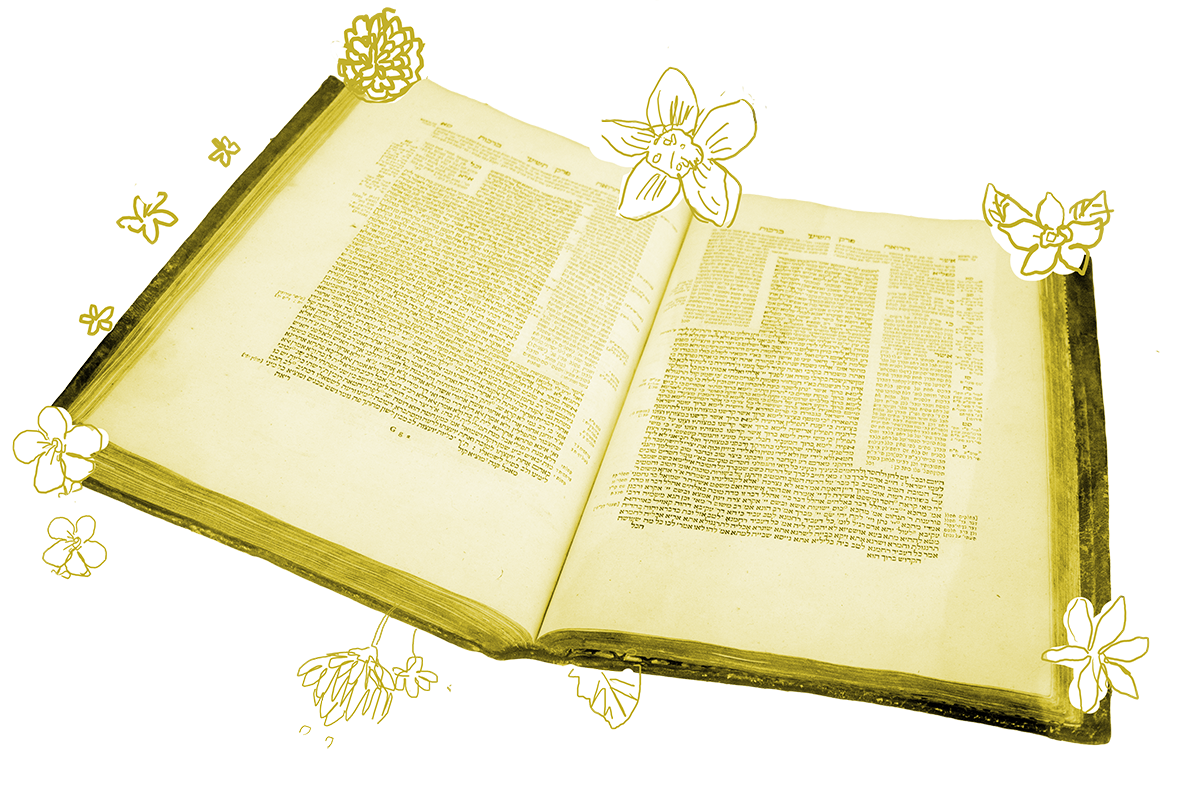Today’s daf deals with a completely elemental question: what books are sacred to Jews? Here is the mishnah on today’s page that engenders the discussion:
All sacred writings, one may rescue from the fire on Shabbat, whether they are read or whether they are not read, even if they were written in any foreign language.
For the rabbis of this mishnah, “sacred writings” essentially means the Hebrew Bible. I say “essentially” because in the time this was written, the text of the Hebrew Bible, though similar to what we have today, was not quite fully agreed upon — the rabbis of the mishnaic era were still debating the final books to join the canon. (Esther and Song of Songs, for example, were still under discussion.) Nonetheless, then as now, the Bible contained three major categories of texts: Torah, Prophets, and Writings.
The language of the mishnah suggests it is casting a wide net: “all sacred writing” should be saved. The mishnah continues to defend this broad “all” by arguing with other opinions that would limit this category. One should save “even books that are not read,” meaning books that are not read liturgically in synagogue (for instance, the Book of Job). Most of the books in this latter category hail from the Prophets and Writings.
Yet this mishnah makes the case that all three categories — Torah, Prophets, and Writings — are sacred. This may not surprise us after nearly two millennia with a clear canon, when we are used to thinking of Tanakh as one bound volume, but in an era when each sacred book was written on a different scroll and they could not be bound together (the codex was not yet in wide us!), the Mishnah was clearly staking a claim that was not obvious to all its readers.
The mishnah goes even further in defending a broad interpretation of sacred writings; even those “written in any foreign language” are worthy of rescue on Shabbat. This line raises a serious debate on our daf and elsewhere: is a Bible translated to another language considered a mere study guide or is it a holy ritual object, fitting to read from in synagogue to fulfill the mitzvah of Torah reading? Many of us would do a double take if we unfurled a ceremoniously wrapped Torah scroll on the bimah to discover it was Greek (or, in our case, more likely English) inside! But, surprisingly enough, this mishnah holds that a Sefer Torah may be written in any language. (Rabban Gamliel, the minority opinion, felt that only the Greek translation — the Septuagint — could live up to the perfection of the original Hebrew.)
Further down on today’s daf, Rav Huna, a 3rd-century Amora, flatly disagrees with the mishnah, asserting that a translated Torah loses its standing as a holy ritual object. And this is the generally accepted view today. Still, the robust debate offers an inspiring reminder that holiness does not necessarily inhere in the exact shape of the Torah’s letters, but springs from the way we treat it, what we learn from it, and the fact that a Jewish community is willing to violate the sanctity of Shabbat to save it from a fire.
Read all of Shabbat 115 on Sefaria.
This piece originally appeared in a My Jewish Learning Daf Yomi email newsletter sent on June 29, 2020. If you are interested in receiving the newsletter, sign up here.


